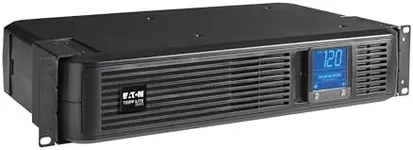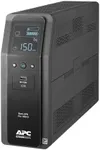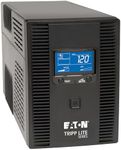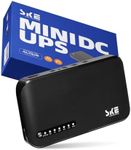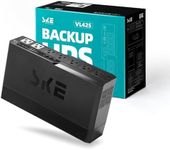Buying Guide for the Best Battery Backup For Wifi Router
When choosing a battery backup for your WiFi router, it's important to ensure that your internet connection remains uninterrupted during power outages. A battery backup, also known as an uninterruptible power supply (UPS), can keep your router running for a certain period, allowing you to stay connected. To make the best choice, consider the following key specifications and how they align with your needs.Battery CapacityBattery capacity is measured in milliampere-hours (mAh) or watt-hours (Wh) and indicates how much energy the battery can store. This is important because it determines how long your router can stay powered during an outage. Higher capacity means longer backup time. For light usage, a lower capacity (around 1000-2000 mAh) might suffice, but for extended outages or multiple devices, look for higher capacities (5000 mAh or more). Consider your typical power outage duration and choose a capacity that can cover that time.
Output VoltageOutput voltage is the voltage that the battery backup provides to your router. It's crucial because your router requires a specific voltage to operate correctly. Most routers use 12V, but some might use 9V or 5V. Check your router's power adapter to find the required voltage and ensure the battery backup matches this. Using the wrong voltage can damage your router or cause it to malfunction.
Number of OutletsThe number of outlets on a battery backup determines how many devices you can connect. This is important if you have multiple devices that need power during an outage, such as a modem, router, and possibly a phone charger. Basic models may have one or two outlets, while more advanced ones can have several. Assess how many devices you need to keep running and choose a battery backup with enough outlets to accommodate them.
RuntimeRuntime refers to how long the battery backup can keep your router running during a power outage. This is influenced by the battery capacity and the power consumption of your router. It's important because it determines how long you can stay connected. Short runtimes (15-30 minutes) are suitable for brief outages, while longer runtimes (1 hour or more) are better for areas with frequent or extended outages. Consider your typical outage duration and choose a runtime that meets your needs.
Recharge TimeRecharge time is the amount of time it takes for the battery backup to fully recharge after being depleted. This is important because it affects how quickly the backup will be ready for the next outage. Shorter recharge times (2-4 hours) are more convenient, especially in areas with frequent outages. If you experience infrequent outages, a longer recharge time (6-8 hours) might be acceptable. Consider how often you experience power outages and choose a recharge time that fits your situation.
Size and PortabilitySize and portability refer to the physical dimensions and weight of the battery backup. This is important if you have limited space or need to move the backup around. Smaller, lighter models are easier to place and transport, while larger models may offer more capacity but take up more space. Consider where you will place the battery backup and whether you need to move it frequently. Choose a size that fits your space and portability needs.
Additional FeaturesAdditional features can include things like LCD displays, USB charging ports, and surge protection. These features can enhance the functionality and convenience of the battery backup. For example, an LCD display can show battery status and runtime, while USB ports can charge other devices. Surge protection can protect your router from power surges. Consider which additional features are important to you and choose a battery backup that offers them.





